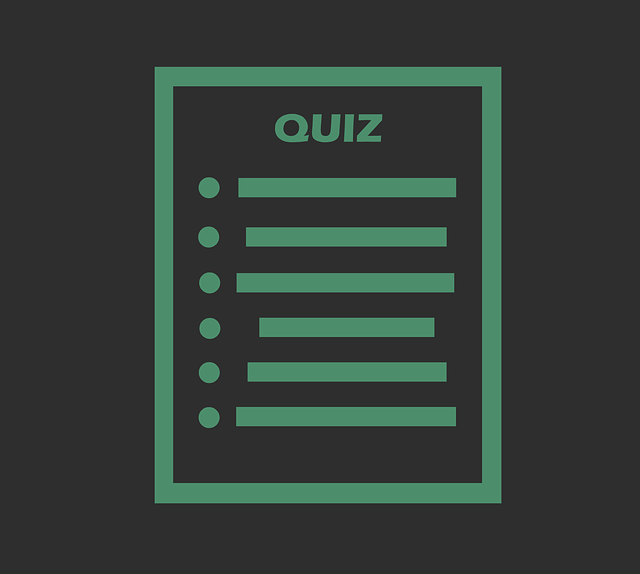1. Introduction To Networking
The Data Link Layer
Question 1
How many octets are there in a MAC address?
- 5
- 8
- 4
- 6
A MAC address is a 48-bit number consisting of 6 octets.
Question 2
What address is used for Ethernet broadcasts?
- 00:00:00:00:00:00
- 11:11:11:11:11:11
- FF:FF:FF:FF:FF:FF
- FF:00:FF:00:FF:00
The address FF:FF:FF:FF:FF:FF is used for Ethernet broadcast traffic.
Question 3
What is a cyclical redundancy check?
- A technique that allows for multiple logical LANs to operate on the same equipment
- The actual data being transported by an Ethernet frame
- A way for two computers to synchronize their clocks
- A mathematical calculation used to ensure that all data arrived intact
A cyclical redundancy check ensures that there was no data corruption.
Networking Devices
Question 1
Which of the following statements accurately describe the differences between a hub and a switch? Check all that apply.
- A hub is a physical layer device, and a switch is a data link layer device.
- A hub causes larger collision domains.
- A switch remembers which devices are connected on each interface, while a hub does not.
- Hubs are more sophisticated versions of switches.
Question 2
What does LAN stand for?
- Locally available network
- Local area network
- Little area network
- Large area network
LAN stands for Local Area Network.
Question 3
What’s a router?
- A network device used specially for fiber cables
- A more advanced version of a switch
- A device that knows how to forward data between independent networks
- A physical layer device that prevents crosstalk
A router connects independent networks by forwarding data between them.
TCP/IP
Question 1
Which of the following is an example of a network layer (layer 3) protocol?
- Ethernet
- IP
- UDP
- TCP
IP, or Internet Protocol, is the most common network layer protocol.
Question 2
What’s the difference between a client and a server?
- Clients and servers are different names for the same thing.
- A server requests data, and a client responds to that request.
- Clients operate on the data link layer, and servers operate on the network layer.
- A client requests data, and a server responds to that request.
Question 3
Which of the following are examples of layers of our five-layer network model? Check all that apply.
- The physical layer
- The application layer
- The presentation layer
- The transport layer
The Data Link Layer
Question 1
How many octets are there in a MAC address?
- 5
- 8
- 4
- 6
A MAC address is a 48-bit number consisting of 6 octets.
Question 2
What address is used for Ethernet broadcasts?
- 00:00:00:00:00:00
- 11:11:11:11:11:11
- FF:FF:FF:FF:FF:FF
- FF:00:FF:00:FF:00
The address FF:FF:FF:FF:FF:FF is used for Ethernet broadcast traffic.
Question 3
What is a cyclical redundancy check?
- A technique that allows for multiple logical LANs to operate on the same equipment
- The actual data being transported by an Ethernet frame
- A way for two computers to synchronize their clocks
- A mathematical calculation used to ensure that all data arrived intact
A cyclical redundancy check ensures that there was no data corruption.
The Physical Layer
Question 1
What is the type of modulation used by twisted pair cable computer networks known as?
- Line crimping
- Simplex communication
- Line coding
- RJ45
Line coding is the modulation of an electrical charge so that each side of a connection knows what is a one and what is a zero.
Question 2
What’s the difference between full and half duplex?
- Full duplex is slower than half duplex.
- Full duplex allows communications in two directions at the same time; half duplex means that only one side can communicate at a time.
- Full duplex is a form of simplex communications.
- Half duplex occurs when hubs are in use; full duplex occurs when switches are in use.
A half duplex connection allows communication in both directions, but only one side can communicate at a time.
Graded Assessment
2. The Network Layer
Routing
Question 1
Select examples of routing protocols. Check all that apply.
- Border Gateway Protocol
- Routing Information Protocol
- Transmission Control Protocol
- Hypertext Transfer Protocol
- User Datagram Protocol
Question 2
Who is permitted to use non-routable address space?
- Anyone
- The IANA
- It’s for testing purposes only
- The IETF
Anyone can use non-routable address space.
Question 3
A typical routing table may contain which of the following? Check all that apply.
- Destination address
- Total hops
- Destination network
- TTL
Subnetting
Question 1
What does CIDR stand for?
- Classless Internet Destination Routing
- Classfull Inter-Destination Routing
- Classless Inter-Domain Routing
- Classfull Identification Routing
CIDR stands for Classless Inter-Domain Routing.
Question 2
Which of the following is a correct form of CIDR notation?
- 192.168.1.0:24
- 192.168.1.0/24
- 192.168.1.0\24
- 192.168.1.0 + 255.255.255.0
CIDR notation uses a forward slash and then lists the numbers of bits in the subnet mask.
Question 3
How many octets does a subnet mask have?
- 1
- 2
- 3
- 4
A subnet mask is the same length as an IP address.
The Network Layer
Question 1
Please select all of the valid IP addresses. Check all that apply.
- 123.456.123.456
- 192.168.1.1
- 8.8.8.8
- 257.70.312.49
Question 2
What happens to the TTL field of an IP datagram every time it reaches a router?
- The TTL field is decremented by one.
- The TTL field is reset to zero.
- The TTL field is used for a cyclical redundancy check.
- The TTL field is incremented by one.
At every router hop, the TTL field is decremented by one until it reaches zero, causing the datagram to be discarded.
Graded Assessment
3. The Transport & Application Layer
The Application Layer
Question 1
Unlike our five-layer model, the OSI network model adds two more layers on top of the Application Layer. Select examples of these new layers below.
- The interconnection layer
- The encryption layer
- The presentation layer
- The session layer
- The compression layer
Question 2
An example of something that operates at the application layer is:
- A router
- TCP
- A web browser
- UDP
Web browsers and server operate at the application layer.
Question 3
What’s the standard number for a TTL field?
8
16
32
64
While this value can be set to anything from 0 to 255, 64 is the recommended standard.
The Transport Layer
Question 1
What ordering of TCP flags makes up the Three-way Handshake?
- FIN, FIN/ACK, ACK
- SYN, SYN/ACK, ACK
- SYN, ACK, SYN, ACK
- SYN, ACK, FIN
The computer that wants to establish a connection sends a packet with the SYN flag set. Then, the server responds with a packet with both the SYN and ACK flags set. Finally, the original computer sends a packet with just the ACK flag set.
Question 2
Transport layer protocols, like TCP and UDP, introduce the concept of a port. How many bits is a port field?
- 4 bits
- 8 bits
- 16 bits
- 32 bits
A TCP or UDP port is a 16-bit number, meaning there are theoretically 65,535 possible values it can have.
Question 3
Please select all valid TCP control flags.
- WAIT
- LISTEN
- CLOSE
- ACK
- RST
- URG
Question 4
A device that blocks traffic that meets certain criteria is known as a __.
- Firewall
- Router
- Switch
- Hub
A firewall is used to block certain defined types of traffic.
Peer Graded Assessment
4. Network Services
Dynamic Host Configuration Protocol
Question 1
What are the four things that all computers need configured in order to operate on a modern network? Check all that apply.
- An NTP server
- A TCP port
- A name server
- An IP address
- A default gateway
- A subnet mask
- A MAC address
Question 2
When using Fixed Allocation DHCP, what’s used to determine a computer’s IP?
- A record
- Location
- A MAC address
- A subnet mask
Fixed Allocation DHCP ensures that computers receive an IP address reserved for it via its MAC address.
Question 3
The process by which a client configured to use DHCP attempts to get network configuration information is known as _____.
- DHCP Discovery
- DHCP Request
- DHCP Offer
- DHCP Acknowledgement
DHCP Discovery is how a client determines configuration information.
Name Resolution in Practice
Question 1
An A Record contains what?
- A CNAME
- An IPv4 address
- An IPv6 address
- A fully qualified domain name
Question 2
Select all that are true.
- One domain name can point to one IP.
- One domain name can point to many IPs.
- Many domain names can point to the same IP.
Question 3
MX stands for __.
- Micro extreme
- Micro exchange
- Mail exchange
- Meta exchange
MX stands for mail exchange.
Question 4
A fully qualified domain name can contain how many characters?
- 63
- 64
- 127
- 255
An FQDN is limited to a total length of 255 characters.
Name Resolution
Question 1
What transport layer protocol does DNS normally use?
- TCP
- IP
- ICMP
- UDP
While DNS over TCP does exist, UDP is the most common protocol.
Question 2
A DNS TTL determines what?
- How many steps there are in the resolution process
- How far away a DNS can be from you
- How many DNS resolutions can take place before the IP has to change
- How long a DNS entry is allowed to be cached
TTL stands for Time to Live and determines how long a DNS entry can be cached.
Question 3
How many root servers are there?
- 8
- 13
- 16
- 17
There are 13 root servers.
Network Address Translation
Question 1
NAT addresses concerns over the dwindling IPv4 address space by _______.
- allowing networks to use fewer IP addresses overall.
- allowing users to move to IPv6 when they want.
- allowing computers using non-routable address space to communicate with the Internet.
- performing IP masquerading.
NAT allows networks to use non-routable address space for their internal devices.
Question 2
What technique allows for inbound traffic through a NAT?
- Port preservation
- Port forwarding
- Port authority
- Ephemeral ports
Port forwarding is a technique that allows for inbound traffic through a router configured to NAT.
Question 3
The total number of IPv4 addresses is approximately:
- 4.2 million
- 4.2 billion
- 4.2 trillion
- Uncountable
There are approximately 4.2 billion IPv4 addresses.
VPNs & Proxies
Question 1
Two-factor authentication is_________________________.
- a method where you need two passwords.
- a method that requires two usernames.
- a method where you authenticate twice.
- a method where you need more than a username and a password.
Two-factor authentication requires a username/password and something extra.
Question 2
VPNs are known as a _ protocol.
- connectionless
- data link layer
- tunneling
- network layer
VPNs are tunneling protocols.
Question 3
A proxy is something that ___________.
- sends data across a single network segment.
- communicates on behalf of something else.
- encrypts traffic sent across the Internet.
- allows for many devices to speak to one other device.
While proxies are many things, they primarily communicate on behalf of something else.
Peer Graded Assessment
5. Connecting To The Internet
Broadband Internet
Question 1
T1 is short for __.
- Transportation System 1.
- Transmission System 1.
- Transportation 1.
- Transmission 1.
T1 is short for Transmission System 1.
Question 2
How fast is a T1 line?
- 1.544 Mb/sec
- 44.763 Mb/sec
- 1 Mb/sec
- 128 Mb/sec
A T1 communicates at speeds of 1.544 Kb/sec.
Question 3
Select all statements that are true of cable internet connections.
- They’re broadband connections.
- They’re dial-up connections.
- They’re shared bandwidth connections.
- They’re wireless connections.
POTS and Dial-up
Question 1
Another term for POTS, or the Plain Old Telephone System, is ___.
- Public Switched Telephone Network.
- Phone Switched Transport Network.
- Public Switched Telephone Exchange.
- Public Available Telephone Network.
- Public Available Telephone Exchange.
POTS and PSTN refer to the same thing.
Question 2
A baud rate is a measurement of the number of __________.
- data segments that can be sent across a telephone line every second.
- bits that can be sent across a telephone line every second.
- bytes that can be sent across a telephone line every second.
- packets that can be sent across a telephone line every second.
A baud rate is equivalent to bits per second.
WANs
Question 1
WAN stands for __.
- Wide Area Network.
- Wired Area Network.
- Wireless Area Network.
- Wireless Local Area Network.
WAN stands for Wide Area Network.
Question 2
In a WAN, the area between a demarcation point and the ISP’s core network is known as _.
- an access point
- a local loop
- a Local Area Network
- a local link
A local loop is the name for the area between a demarcation point and an ISP’s network.
Question 3
A point-to-point VPN is also known as a __.
- site-to-site VPN
- one-to-many VPN
- port forwarding VPN
- data link VPN
A point-to-point VPN can also be referred to as a site-to-site VPN.
Wireless Networking
Question 1
How many address fields does an 802.11 header have?
- 1
- 2
- 3
- 4
There are four different address fields in an 802.11 header.
Question 2
A wireless channel is __.
- a portion of a frequency band.
- a point-to-point wireless connection.
- a collision domain.
- an example of an ad-hoc network.
A channel represents a portion of a frequency band.
Question 3
Choose all of the frequencies that wireless networks typically operate on.
- 88Mhz
- 1.544Ghz
- 2.4Ghz
- 5Ghz
Peer Graded Assessment
6. Trouble the Future of The Internet
Digging into DNS
Question 1
One of Level 3’s public DNS servers is __.
- 4.2.2.3
- 8.8.8.8
- 127.0.0.1
- 192.168.1.1
Level 3’s public DNS servers are 4.2.2.1 through 4.2.2.6
Question 2
A DNS resolver tool available on all major desktop operating systems is __.
- host
- tracert
- ping
- nslookup
nslookup is available by default on Windows, macOS, and Linux.
Question 3
The organization responsible for DNS at a global level is __.
- RFC
- ICANN
- IANA
ICANN is responsible for DNS at a global level.
IPv6
Question 1
An IPv6 address is how many bits long?
- 16
- 32
- 64
- 128
An IPv6 address is 128 bits long
Question 2
The very first field in an IPv6 header is the _.
- data payload field
- version field
- source address field
- traffic class field
This field is used to indicate what version of IP is being used.
Question 3
The IPv6 header field that indicates how many routers can forward a packet before it’s discarded is called the __.
- next header field
- router forward field
- hop limit field
- TTL
The hop limit field configures how many routers can try to forward a packet before it’s discarded.
The Cloud
Question 1
A piece of software that runs and manages virtual machines is known as a __.
- cloud storage device
- hypervisor
- cloud computing device
- virtual instance
A hypervisor manages many virtual instances running on a single host.
Question 2
Office 365 Outlook is an example of _.
- IaaS
- PaaS
- FttH
- SaaS
Office 365 Outlook is an example of Software as a Service (SaaS).
Question 3
A hybrid cloud is ____.
- a combination of virtual hosts and virtual guests
- a combination of a public cloud and a private cloud
- a combination of a public cloud and hardware virtualization
- a combination of a private cloud and a mesh network
A hybrid cloud runs some services on a cloud provider and some services in-house.
Verifying Connectivity
Question 1
The protocol used to communicate network errors is known as __.
- Traceroute
- UDP
- ICMP
- TCP
ICMP is used to communicate errors back to the client.
Question 2
The ping utility sends what message type?
- Destination Network Unknown
- Destination Network Unreachable
- Echo Request
- Echo Reply
By default, the ping utility sends an Echo Request ICMP message type.
Question 3
On Windows, one of the tools you can use to verify connectivity to a specific port is __.
- nc (netcat)
- Test-NetConnection
- tracert
- ping
Test-NetConnection lets you test many things, including connectivity to a specific port on a remote host.
Graded Assessment
Important Links:
- Bacteria and Chronic Infections Coursera All Weeks Quizes
- Business Analytics and Digital Media Answers All weeks
- COVID-19 Contact Tracing Coursera Answers
- Epidemiology: Successful Career Development Coursera Answer
- Introduction to Cloud Identity Coursera All weeks Quiz
- For more Courses answer visit to Blog





